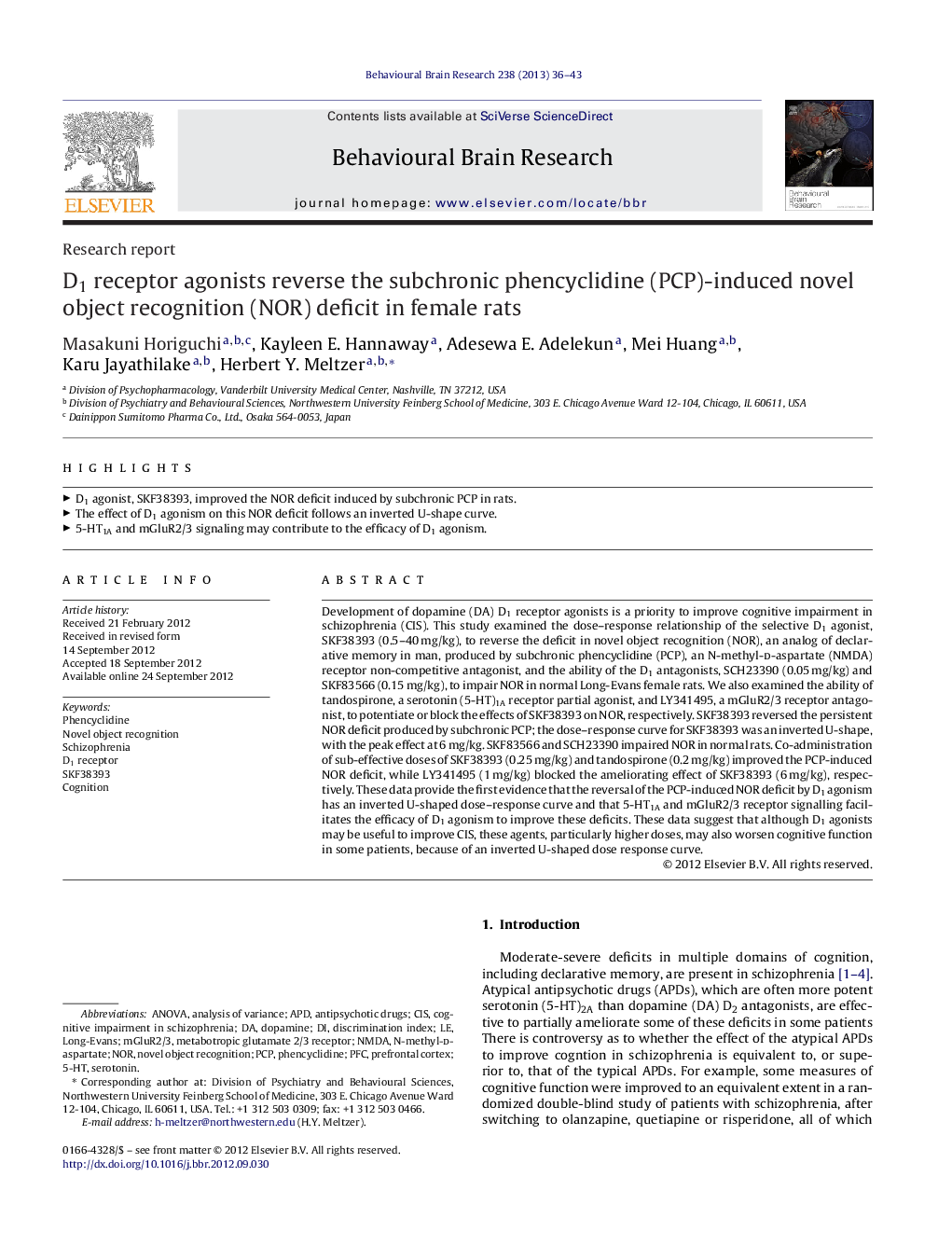| کد مقاله | کد نشریه | سال انتشار | مقاله انگلیسی | نسخه تمام متن |
|---|---|---|---|---|
| 4312905 | 1612994 | 2013 | 8 صفحه PDF | دانلود رایگان |

Development of dopamine (DA) D1 receptor agonists is a priority to improve cognitive impairment in schizophrenia (CIS). This study examined the dose–response relationship of the selective D1 agonist, SKF38393 (0.5–40 mg/kg), to reverse the deficit in novel object recognition (NOR), an analog of declarative memory in man, produced by subchronic phencyclidine (PCP), an N-methyl-d-aspartate (NMDA) receptor non-competitive antagonist, and the ability of the D1 antagonists, SCH23390 (0.05 mg/kg) and SKF83566 (0.15 mg/kg), to impair NOR in normal Long-Evans female rats. We also examined the ability of tandospirone, a serotonin (5-HT)1A receptor partial agonist, and LY341495, a mGluR2/3 receptor antagonist, to potentiate or block the effects of SKF38393 on NOR, respectively. SKF38393 reversed the persistent NOR deficit produced by subchronic PCP; the dose–response curve for SKF38393 was an inverted U-shape, with the peak effect at 6 mg/kg. SKF83566 and SCH23390 impaired NOR in normal rats. Co-administration of sub-effective doses of SKF38393 (0.25 mg/kg) and tandospirone (0.2 mg/kg) improved the PCP-induced NOR deficit, while LY341495 (1 mg/kg) blocked the ameliorating effect of SKF38393 (6 mg/kg), respectively. These data provide the first evidence that the reversal of the PCP-induced NOR deficit by D1 agonism has an inverted U-shaped dose–response curve and that 5-HT1A and mGluR2/3 receptor signalling facilitates the efficacy of D1 agonism to improve these deficits. These data suggest that although D1 agonists may be useful to improve CIS, these agents, particularly higher doses, may also worsen cognitive function in some patients, because of an inverted U-shaped dose response curve.
► D1 agonist, SKF38393, improved the NOR deficit induced by subchronic PCP in rats.
► The effect of D1 agonism on this NOR deficit follows an inverted U-shape curve.
► 5-HT1A and mGluR2/3 signaling may contribute to the efficacy of D1 agonism.
Journal: Behavioural Brain Research - Volume 238, 1 February 2013, Pages 36–43